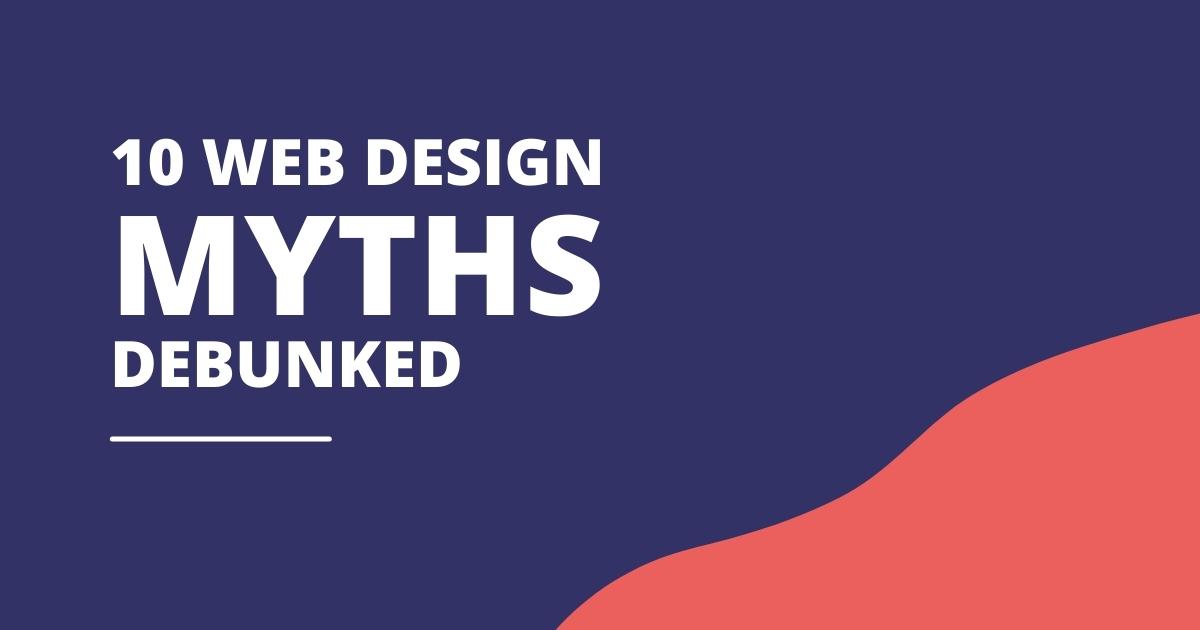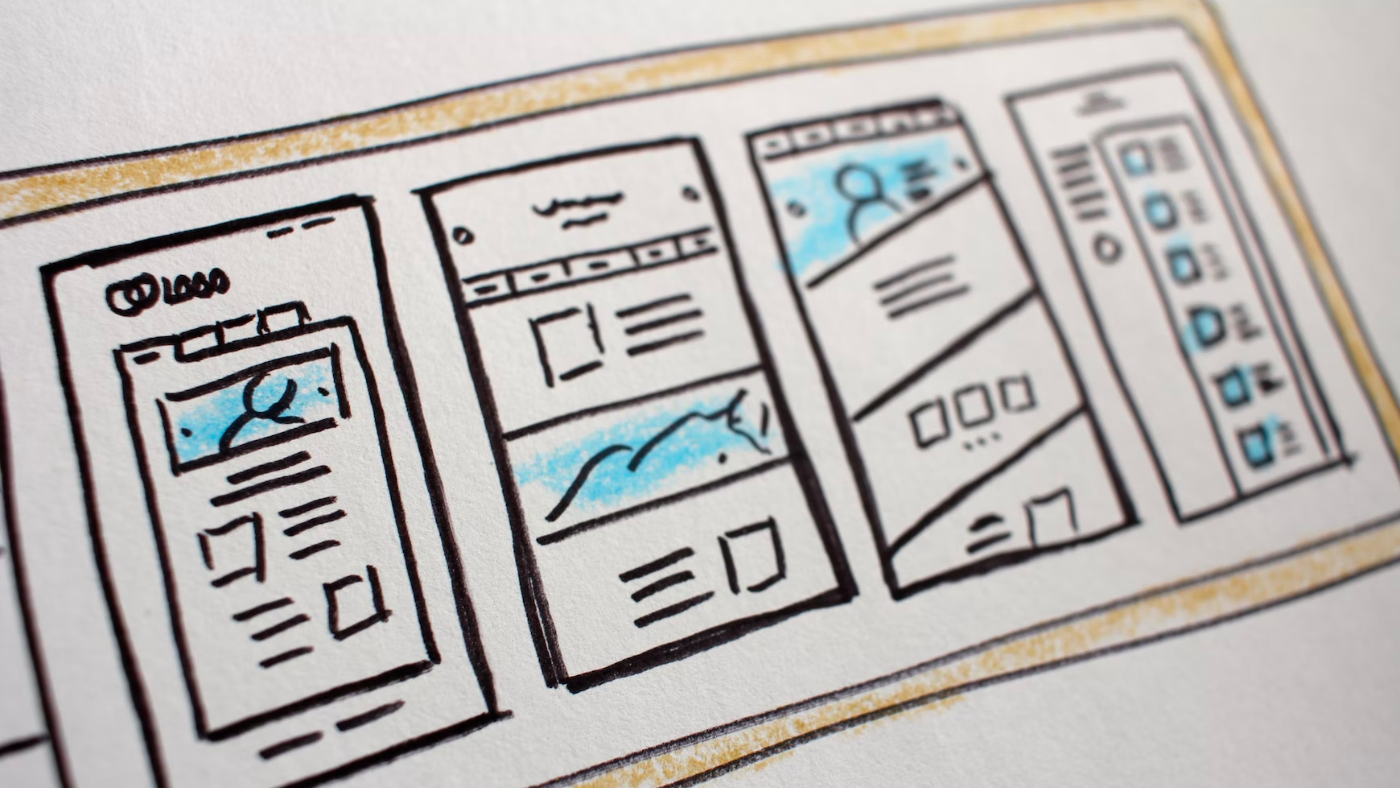As a busy web design agency, we’ve come across a huge number of misconceptions about website design over the years. To help you avoid falling into them, we’ve compiled (and debunked) our top 10 myths below:
Myth 1.
Launching a website is a one-off task
Think of some of the adverts you used to see on TV as a child and compare them to the ones your parents saw when they were children – imagine seeing them on ITV or Prime Video today! Marketing and business branding from even just a couple of years ago can often look outdated. The world moves fast and people change constantly. What sparks your customers’ interests today might be slightly different from that of just a few months ago.
As web design trends and technology evolve so quickly, building a website and keeping it the same for years is not a viable option for a business wanting to stay up to date. Websites and their content need to be regularly updated and refreshed. Consider a full rebuild periodically to stay on top of your game.
Myth 2.
Once your website is launched, it can be left to do its job
If only it were that simple! As a bare minimum, ongoing monitoring and maintenance needs to take place. Content should be constantly updated to encourage return visits and to ensure that search engines view it as an active website and display it in more search results.
Myth 3.
Your website should appeal to your personal preferences
It’s great if you like your own website. But your business goals are more important. Put the preferences of your target audience at the forefront. The design and functionality of your site needs to do the job it’s meant for – reaching your target market and getting visitors to buy into your brand, product or message.
Myth 4.
Minimalism is essential
It’s true that those cluttered websites we used to see in the early days of the internet would look dodgy in today’s world but going overboard on minimalism might not be the answer. Brands like Apple are able to do it because their brand is so well known; it doesn’t take them much to explain what they are selling – we all know they produce incredible products. Don’t be afraid to use space on your site to convince visitors that your product or service is great. With the right customer journey defined and with careful design consideration, adding more social proof and information can work wonders for conversions.
Myth 5.
The more features, the better
In contrast to what we said in the above myth, flooding your website with too many features can make your site messy and complicated to navigate around. You need the functionality you need – it’s as simple as that. Include the features needed to make your site engaging and useful. But a large number of widgets, QR codes, chatbots, parallax windows, never-ending scrolling and every other web design element available- they’re not suitable for every website.
Myth 6.
It’s all about the homepage
The homepage of your website is usually the most visited, that’s true. But be careful not to neglect the other pages. The subsequent pages in your site often provide more value about the details of your business and what you are selling. It is also worth noting that all pages can be indexed for search results based on specific keywords – so these pages will also appear in searches and be the first thing that some of your customers see.
Myth 7.
Design is king
The design of your website is a tool to support its content, not the other way around. It’s great to have a cool looking site but don’t let it overshadow the content and features you really need visitors to focus on. Try to view design as a facilitator, effectively delivering the content and features to the visitor. It knows when to be loud and when to sit down and shut up!
Myth 8.
Launching a website brings immediate traffic
Having a newly designed site is a beautiful thing! Design is definitely a factor in search engine optimisation and will ultimately increase traffic and conversions. But remember that, whilst it’s a great first step, it may sit hidden for a while unless you are actively feeding it traffic. Content, keywords and other SEO strategy points will be needed to build a bigger audience.
Myth 9.
I do not need a mobile version because my customers are on desktop
The truth is, there is barely a single industry or use-case in which users will not need to access a website via mobile nowadays. Over 50% of all website usage is via mobile (Statista). Mobile responsiveness is a key factor in Google’s ranking of websites in search results and data shows that many visitors abandon websites that don’t display correctly on their device. Having a mobile responsive website is essential in 2022 and not having it in place makes your site look dated and unprofessional.
Myth 10.
Websites can be done on a really tight budget
Designing and building a website is an intricate and detailed process. The time it takes varies from one project to another. Very cheap websites tend to be built on overused templates with poor content, code and experience behind them. Obviously, spending more will get you more. Having said that, we do our best to support local business by offering solutions for most budgets and advising on cost-saving opportunities when discussing your build. Ultimately, investing in your website will pay off in the long-run but we can usually find a solution to fit your budget.
So there you have it! Our top 10 web design myths, well and truly debunked! If you have any questions or need advice on how to improve your website, get in touch.
Webizzy is a web design agency which has been established for almost 10 years. To find out about improving your website, get in touch.







